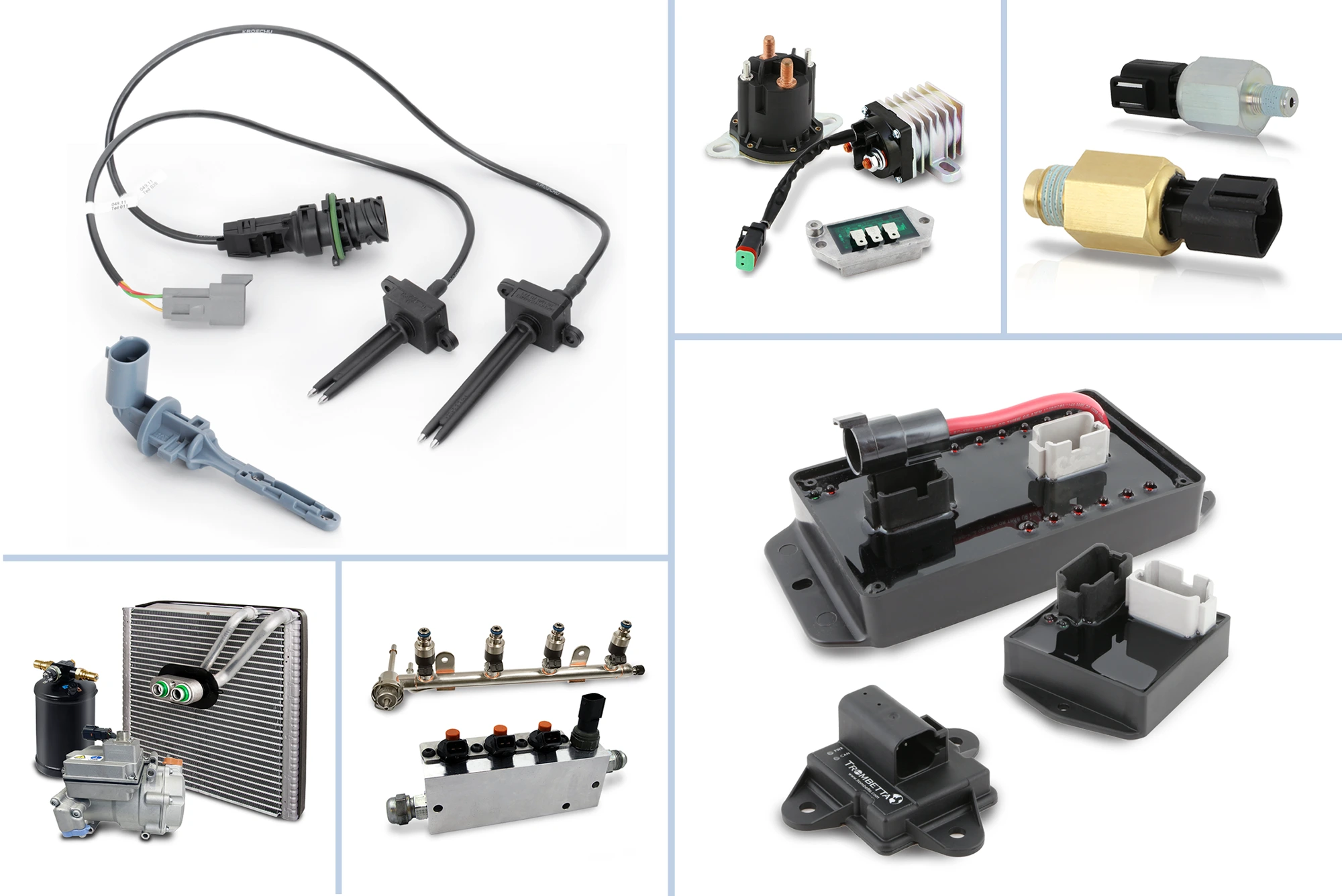September 05, 2022 / Training
A Closer Look: Anti-Lock Braking (ABS) System Operation
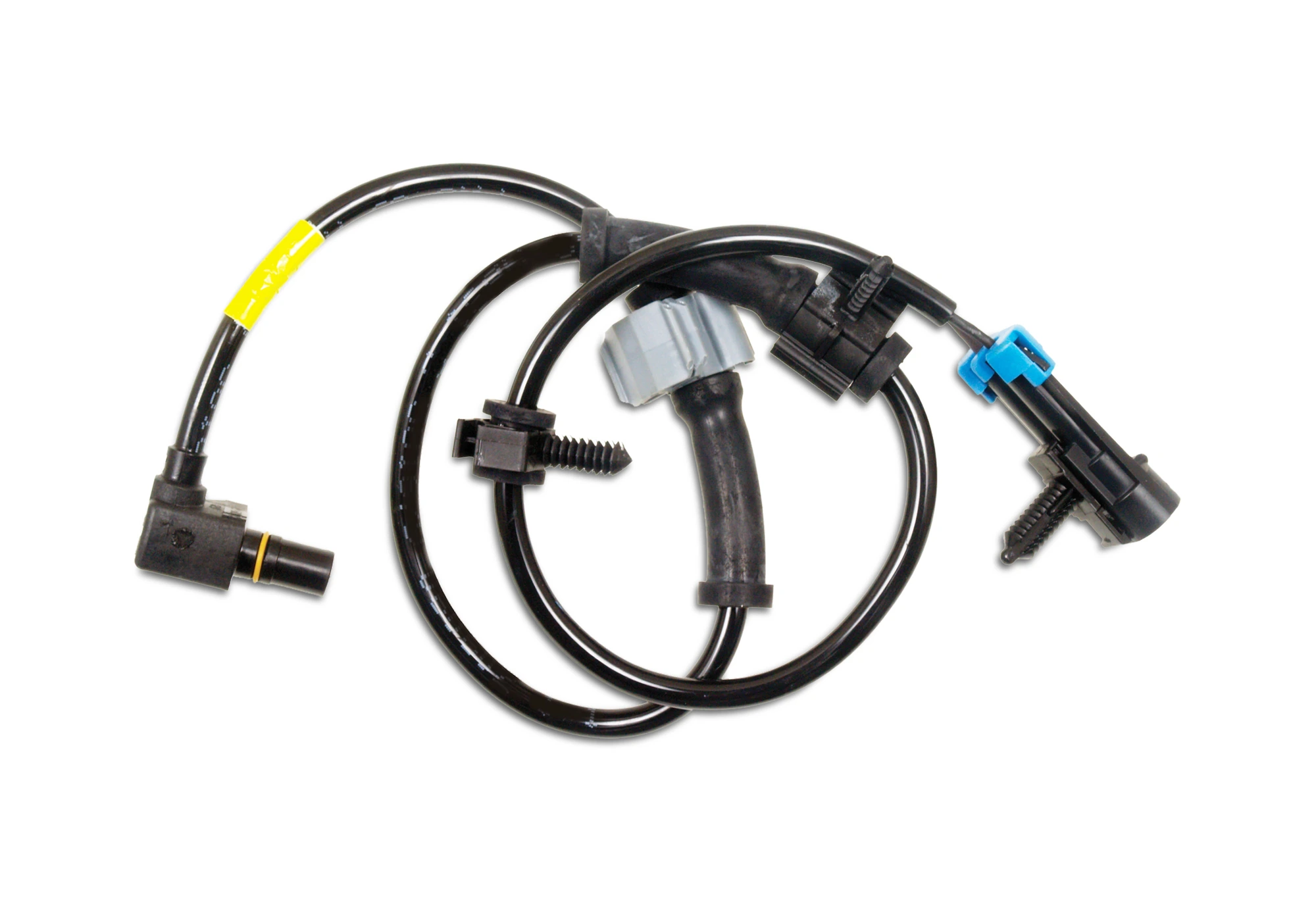
ABS System Overview: A Closer Look at this Important Safety System
In order to maintain vehicle control, the Anti-Lock Braking System (ABS) is concerned with monitoring and controlling wheel slip. The major components to every ABS system are: wheel speed sensors, brake switch, brake master cylinder, EBCM and hydraulic assembly containing the pump motor, accumulator, valves and solenoids.
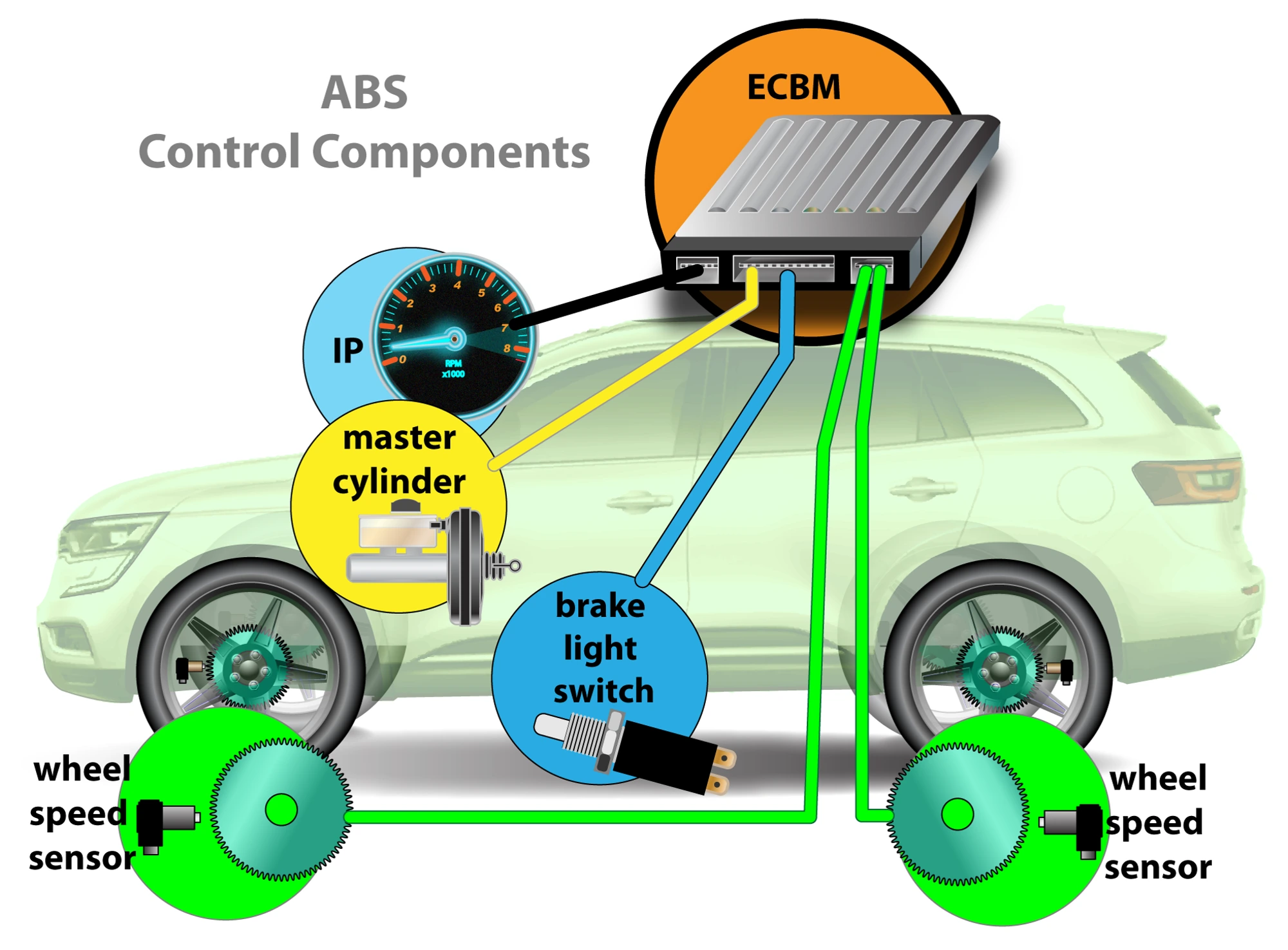
The Heart of the ABS System – Wheel Speed Sensors
There are two categories of wheel speed sensors: passive and active. VR or variable reluctance sensors are a magnet within a coil of wire. Signals are generated by rotating a metal reluctor past the sensor. Active wheel speed sensors are magneto-resistive that produce a digital signal, and the amplitude change is typically about half a volt.
Wheel speed sensors and ABS status can be monitored on the scan tool. This is a great starting point for any ABS issue after codes have been checked.
The first and most widely used are called passive wheel speed sensors. These are VR or variable reluctance sensors and are essentially just a magnet within a coil of wire. Signals are generated by rotating a metal reluctor past the sensor. As the cogs approach the sensor, the magnetic field expands, and then, when the cog moves away from the sensor, the magnetic field collapses. The expanding and contracting magnetic field induces an AC voltage into the sensor, which is then recognized by the EBCM as a speed signal based on the frequency of the changes.
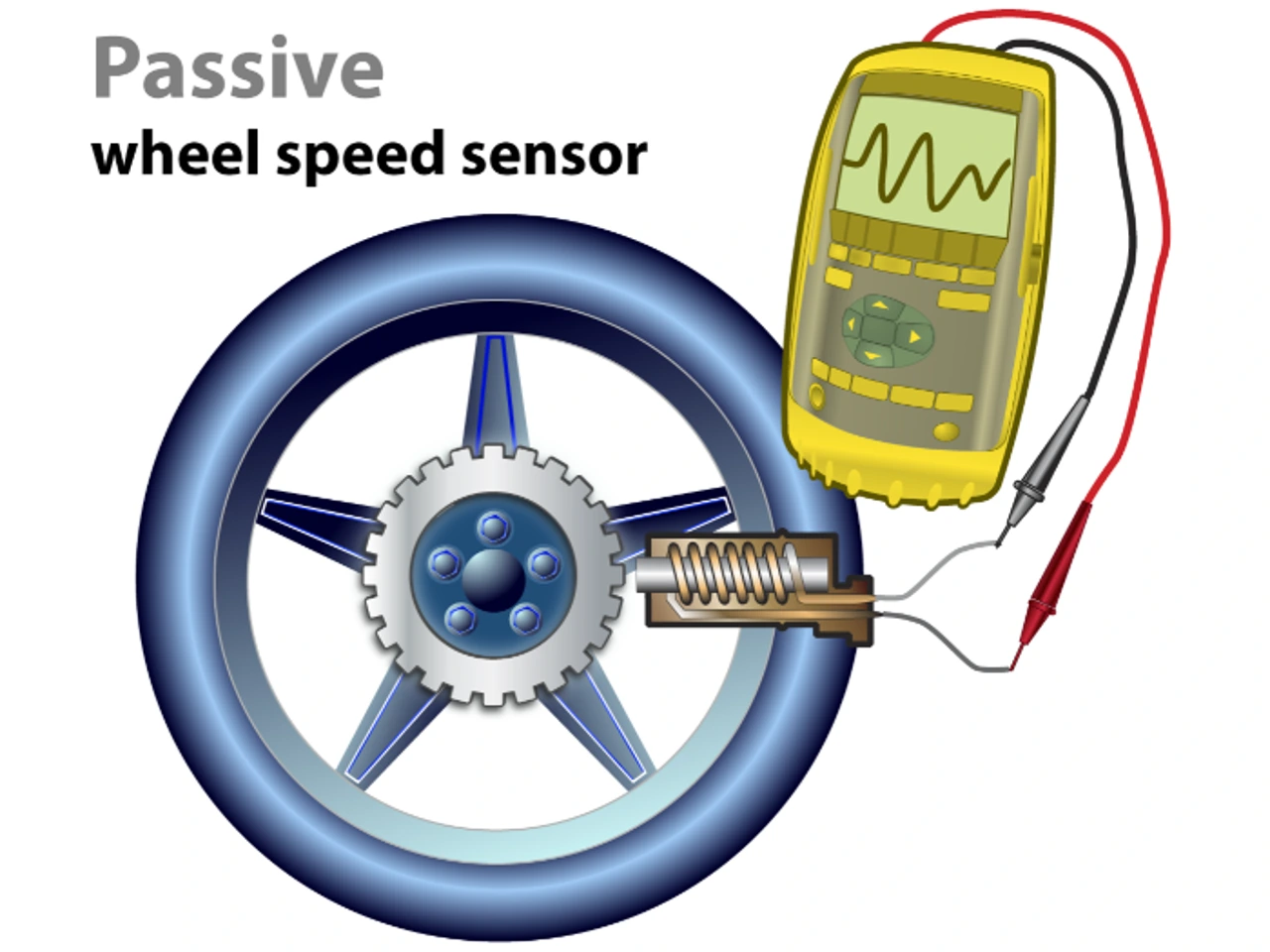
VRS sensors do not require power to operate. These sensors generate AC voltage. Signal strength is dependent upon speed, and they are not effective at low speeds. This is why VR sensors are not used in stability control systems. Technicians can test the resistance of the sensor with their Ohm meter. Expected resistance will be somewhere between 1,000-2,500 ohms. It is important to check the vehicle’s service manual to confirm these specs, though often the resistance spec will be found in a testing procedure instead of specs. Air gap between the sensor and tone ring is critical.
To test the resistance of a VRS, unplug the sensor and probe across the two wires. There could still be issues with the sensor, tone ring and wiring. This test will prove that a sensor is bad if a high resistance is measured but does not prove the sensor is good.
Responding to the need for better onboard diagnostics and the ability to detect even lower wheel speeds, engineers created the active wheel speed sensor. There are two basic types we will arbitrarily refer to as type 1 and type 2. Within both types is a magneto-resistive circuit. While technically not accurate, for our purposes we will simplify the sensor’s operation by considering it essentially a variable resistor with two states: high and low resistance.
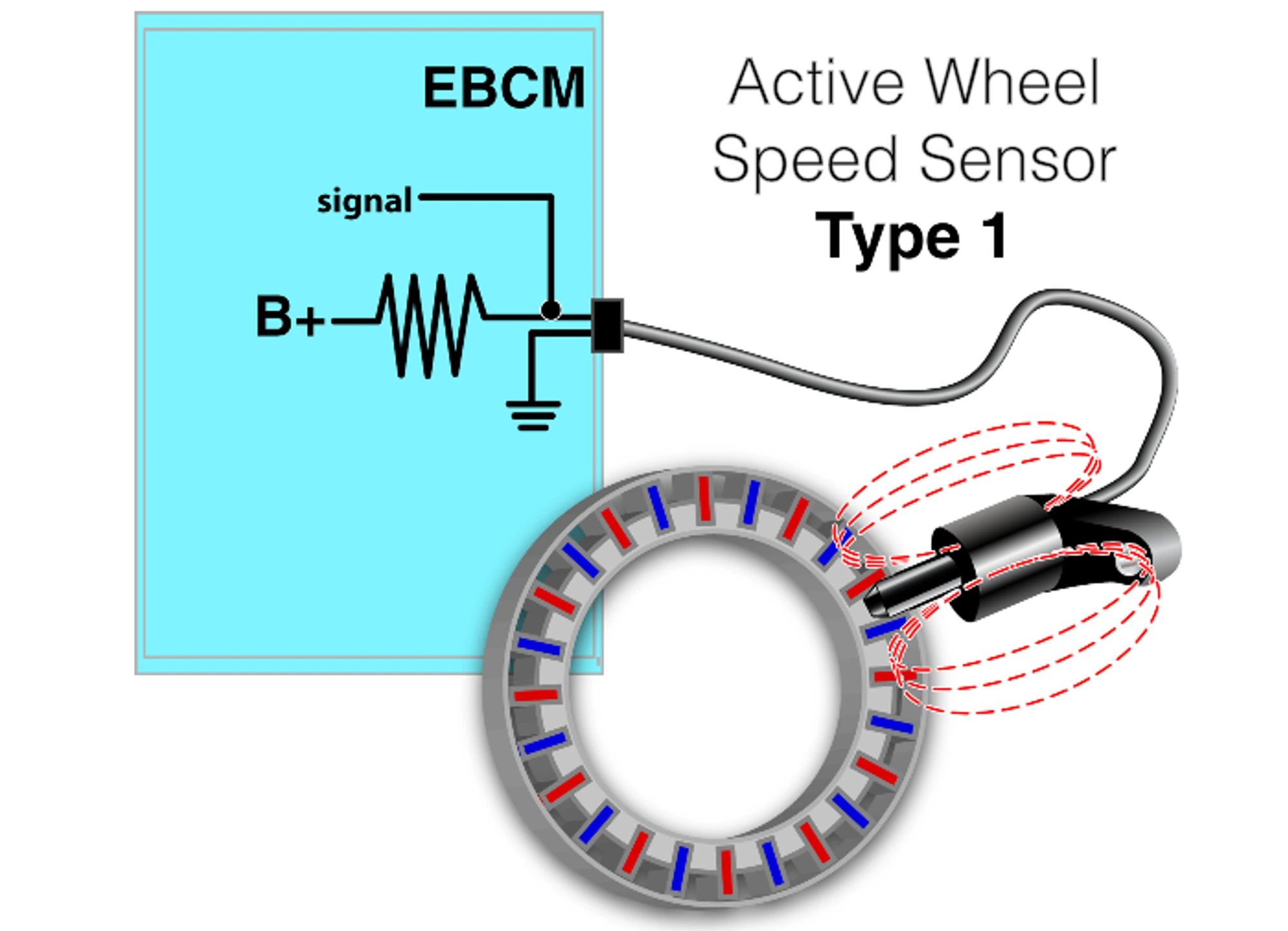
The type 1 sensor uses a hub that has magnets embedded into it with alternating polarity. As the hub moves past the sensor, the sensor’s resistance changes states. The EBCM supplies the sensor with B+ through an internal resistor and ground which creates a voltage divider circuit.
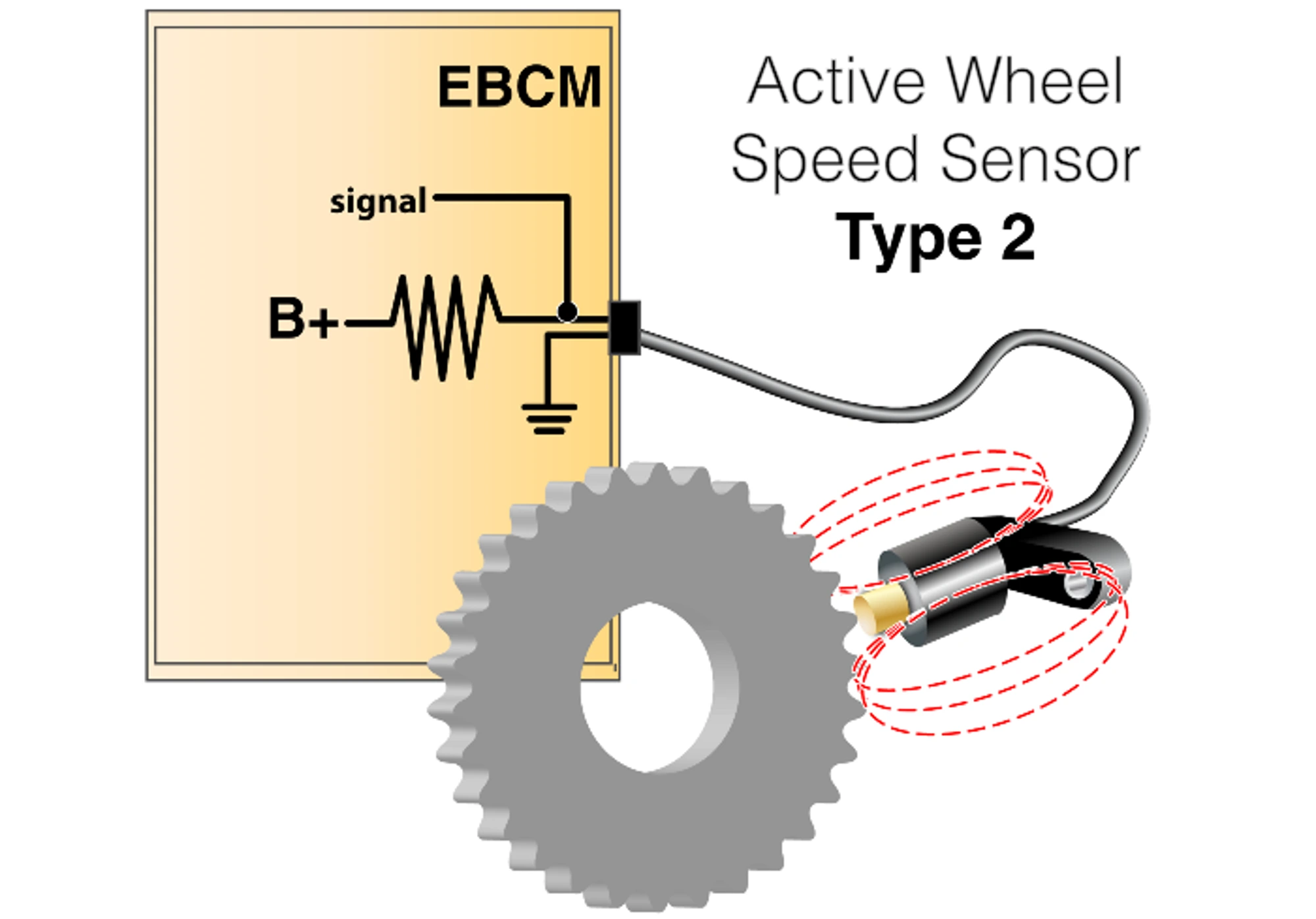
The type 2 active wheel speed sensor incorporates a magnet inside of the sensor itself. Instead of a hub with an embedded set of magnets, the hub has a simple reluctor. As the reluctor passes by the wheel speed sensor, it will act as a variable resistor with two states. The EBCM supplies the sensor with B+ through an internal resistor and ground, which creates a voltage divider circuit. When a magnetic field is applied or increased within the sensor due to the rotating hub, the effective resistance of the sensor changes. There are only two possible state changes, and this creates an output of two different voltages.
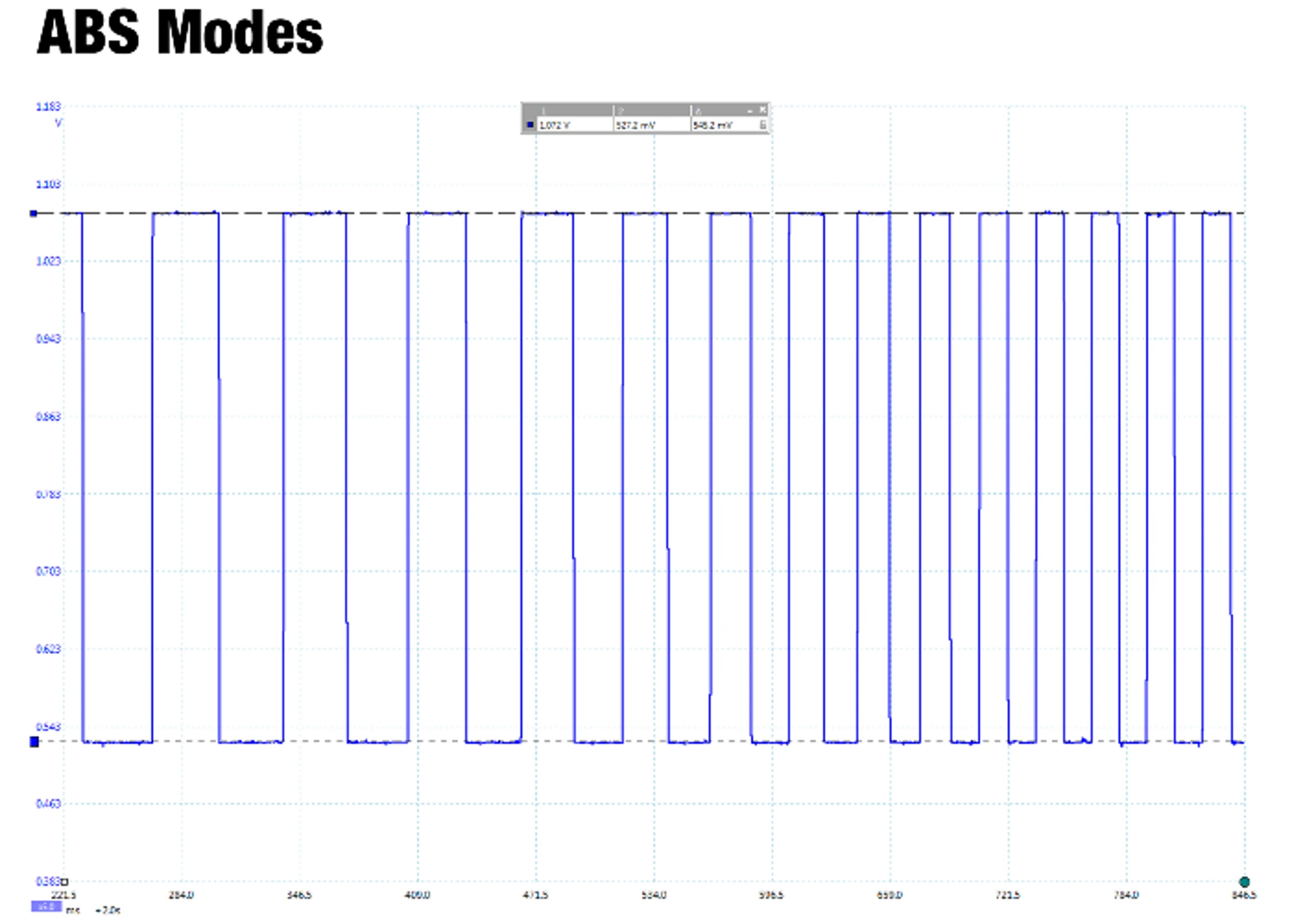
All active wheel speed sensors produce a digital signal, and typically the amplitude change is only about half of a volt. If a technician needs to test an active wheel speed sensor, the simplest test is to ensure that the resistance is proper. These are polarity sensitive so it is important that the meter is hooked up properly. If the resistance is in spec, the next test should be to measure the output. While this can be done with a meter, the most accurate method is to monitor it using a lab scope.
Regardless of sensor type, if a wheel speed sensor is suspected to be bad, it is important to also test the wiring to check proper operation. The wires are subject to significant movement as the chassis and suspension moves, and there may be intermittent faults due to wiring defects. Many manufacturer trouble trees will have the technician do an open circuit check on the harness. This test can be misleading and cause misdiagnosis. The wires are low current and low voltage but must be in working condition. The wires must be load tested to check proper operation. One method is to disconnect the sensor and module; applying power at one end and a test light at the other end – this will load test the wiring. This method is something any tech can perform.
Premium Replacements for an Important Safety Category
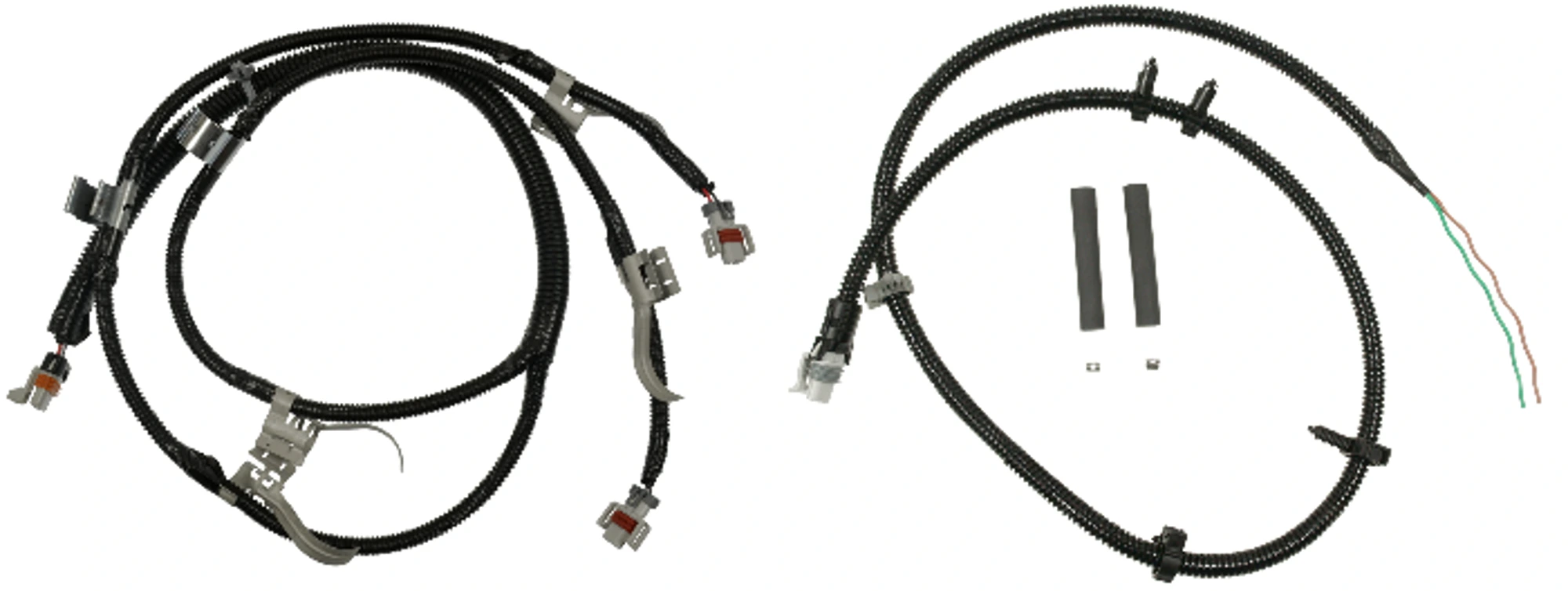
Along with industry-leading coverage, Standard® delivers the quality professional technicians depend on. In addition to premium sensors, Standard® offers complementary connectors and harnesses. When you need to replace an ABS sensor or just a connector or harness, look to Standard® for your next ABS repair.
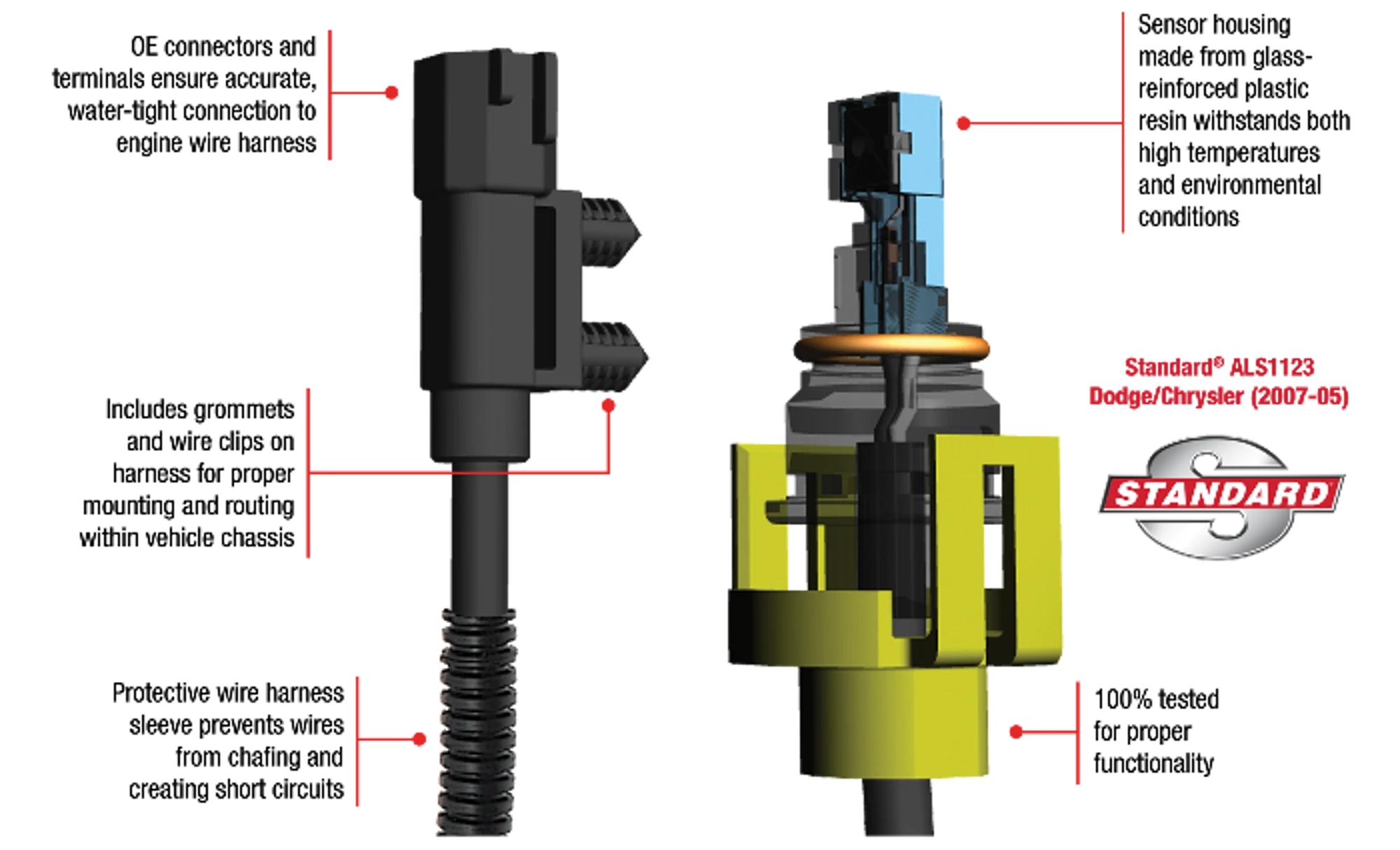
Standard® offers more than 2,500 ABS Speed Sensors for import and domestic applications for 96% coverage. Standard® ABS speed sensors are designed to provide consistent performance, matching the OE for form, fit and precision function. Features such as superior magnetic circuit materials are engineered into Standard® sensors to deliver higher voltage output preventing ABS system failure. Superior design and extensive laboratory plus real-life testing is why Standard® ABS sensors perform equal to or better than the original.
To learn more, visit StandardABSsensor.com.
And check out our ABS Sensor Playlist on YouTube!
March 01, 2024 / Training
Why Pentastar Oil Filter Housings Fail
In service since 2011, the Chrysler Pentastar 3.6L engine has powered more than 10 million of the most popular vehicles on the road. These Pentastar engines are equipped with oil filter housings, which contain the oil filter, sensors, and a heat exchanger to help cool the oil. The oil filter housings on the Pentastar V6 engine have become known for their high failure rates. These failures have mistakenly been attributed the idea that the housings can warp due to heat, but this has been proven false. So, why do these units typically leak?
August 15, 2022 / Training
Variable Valve Timing (VVT) Repair Tips
Variable Valve Timing (VVT) or Variable Cam Timing (VCT) is common on most newer engines. These systems are designed to reduce emissions and maximize engine performance and fuel economy. Here's some background on VVT and a few tips for dealing with issues that come up.
August 08, 2022 / Training
Turbocharger Diagnosis Tips
Turbocharged engines are becoming more popular, as vehicle manufacturers look to increase fuel efficiency, maintain performance and reduce emissions. Symptoms of a malfunctioning turbocharger include loss of power, excess smoke, high fuel consumption, overheating, high exhaust temperature and oil leaks from the turbo. Here are a few important diagnostic and repair tips to keep in mind.
August 12, 2022 / Training
Tire Pressure Monitoring System (TPMS) Repair Tips
The Tire Pressure Monitoring System (TPMS) is a safety device that measures, identifies and warns you when one or more of your tires is significantly under-inflated. Standard® and Intermotor® are committed to helping technicians with TPMS repairs, whether it’s offering OE-Match TPMS sensors or providing repair tips from our team of ASE-certified master technicians. Here are a few TPMS repair tips.
August 05, 2022 / Training
Mass Air Flow (MAF) Sensor FAQs
The Mass Air Flow (MAF) sensor is a key component of the engine’s fueling strategy. It is crucial that the MAF sensor reports with 100% accuracy to ensure peak performance, fuel economy and reduced emissions. Here are some helpful tips such as how and when to replace them and steps to extend their longevity.
August 19, 2022 / Training
Ignition Coil Operation
Coil-on-plug assemblies are designed to convert a low voltage (primary side) to a high voltage (secondary side) to fire the spark plugs. They perform the functions of both the ignition coil, which creates the spark energy, and the spark plug wire set, which delivers the high-voltage energy to the spark plug. Today's coil-on-plug assemblies come in a variety of physical and wiring configurations.
August 01, 2022 / Training
Diesel Engine Repair Tips
Diesel Engines have become more popular thanks to a steady string of advancements. New engine designs, noise and vibration-damping technologies, and improvements like electronic engine control have spawned a new generation of engines that are more powerful and fuel efficient than similar-size gasoline engines. Learn more about today's diesel engines with these repair tips from our team of ASE-certified master technicians.
January 01, 2023 / Training
A Closer Look: Variable Valve Timing
In an effort to increase fuel efficiency and elevate performance across today’s vehicles, nearly every manufacturer has equipped new vehicles with Variable Valve Timing (VVT) technology, also known as Variable Cam Timing (VCT).
January 05, 2024 / Training
A Closer Look: Turbochargers
Turbocharger Opportunities: In an effort to increase fuel efficiency, maintain performance, and reduce emissions, vehicle manufacturers are adding turbocharged engines to their lineups at a significant rate. Over the next five years, the turbo service market will continue to experience substantial growth.
September 19, 2022 / Training
A Closer Look: Turbocharger Operation and Installation
Turbochargers consist of just three major internal components: the turbine, the compressor and the bearing system that supports the turbine shaft. In an effort to increase fuel efficiency, maintain performance and reduce emissions, vehicle manufacturers are adding turbocharged engines to their lineups at a significant rate.
September 16, 2022 / Training
A Closer Look: Tire Pressure Monitoring Systems (TPMS) Operation
The Tire Pressure Monitoring Systems (TPMS) is a valid safety device that has been mandated for years. TPMS introduced a lot of new terminology – initiate, program, activate, clone, protocol and relearn. This safety system, a prime service opportunity, warns drivers of issues with their tires and protects motorists from potential danger.
January 15, 2024 / Training
A Closer Look: Servicing Electric and Hybrid Vehicles
Hybrid vehicles have been sold in the U.S. for over 20 years. As hybrids continue to grow in popularity, and as fully electric vehicles have entered the market in the past several years, they have brought with them numerous service opportunities for aftermarket repair facilities. Whether shops dive in and get involved with replacing batteries, inverters, or other high-voltage components, or they stick to light-duty servicing, there is plenty of work to go around.
January 08, 2024 / Training
A Closer Look: Ignition Coils
Engine misfires, rough idle, a decrease in power under acceleration, poor fuel economy, and a check engine light are all signs of an ignition coil that has failed. OE coils are known for their high failure rates. Read along for more information on ignition coils, how to diagnose a failed one, and why an original equipment manufacturer’s coil may not be the best replacement choice.
January 12, 2024 / Training
A Closer Look: Gasoline Direct Injection (GDI)
Gasoline direct injection (GDI) is used on most new vehicles and requires a different approach to diagnosis and service. GDI technology has been an integral part of helping to improve fuel economy while reducing emissions and can be found in more than half of the U.S. fleet. In fact, the use of GDI engines has grown by over 600% since 2010. This means that in the next five years, 42 million more vehicles with GDI will enter the Aftermarket “Sweet Spot” of 6-12 years old, during which their injectors and related parts may need to be serviced or replaced. While GDI systems have proved effective, these systems encounter specific failures and require an understanding of how they work and how to test them when they set a code.
January 26, 2024 / Training
A Closer Look: Emissions
The Check Engine Light (CEL) is arguably one of the most effective yet underappreciated advancements in reducing vehicle emissions. Following the introduction of On-Board Diagnostics II (OBD II), the CEL is illuminated continuously if an on-board system monitor has failed a specified number of times and is negatively affecting emissions. If a catalyst-damaging event, such as a misfire, occurs, the CEL will flash. In today’s world of electric vehicles, hybrids, and partial zero-emission vehicles, many people forget that simply keeping their internal combustion engine (ICE)-powered vehicle operating as designed will help in reducing emissions.
September 12, 2022 / Training
A Closer Look: Electronic Throttle Bodies and Control Systems
Electronic Throttle Control (ETC) systems are responsible for improving fuel economy, reducing emissions, protecting powertrain components and providing an overall better driving experience. Most vehicles on the road today use ETC. It is important for technicians to understand the principles of the system before delving into system specifics.
January 29, 2024 / Training
A Closer Look: Electronic Throttle Bodies
A shop’s reputation is affected by things like accuracy of diagnosis, quality of the repair, and friendly service. Equally as important is the quality of the parts installed. If the shop does everything right, and the part fails, the customer will ultimately be upset with the shop. When a new part fails, the customer is inconvenienced again, and begins to lose faith with the shop that performed the work. This ultimately begs the question–why take a chance with inferior parts?
January 19, 2024 / Training
A Closer Look: Advanced Driver Assist Systems (ADAS)
Advanced Driver Assist Systems have created quite a buzz over the last several years. New business opportunities continuously arise, including a new segment of mobile technicians focusing on ADAS calibrations. While ADAS may still seem relatively new, automotive service professionals have actually been servicing Driver Assist Systems for decades. Systems like power steering, power brakes, and cruise control have been assisting motorists for many years. What is different with ADAS is that there are now input devices to understand what the driver’s intent is and alert the driver to potential dangers, rather than relying solely on the driver’s sight and sound.
January 22, 2024 / Training
A Closer Look: ABS Sensors
Anti-lock Braking Systems are intended to do exactly as the name portrays – prevent a vehicle’s wheels from locking up during a braking event. If any of the wheels lock up, the driver has less control of the vehicle and is more prone to an accident. By releasing some brake pressure to the locked-up wheel, the stopping distance will be increased, but the driver will be able to maintain control to hopefully avoid a collision. Prior to ABS, drivers were taught to pump the brake pedal when attempting to stop suddenly, or when stopping on gravel, ice, or loose pavement. Now, the ABS system does that for them.
